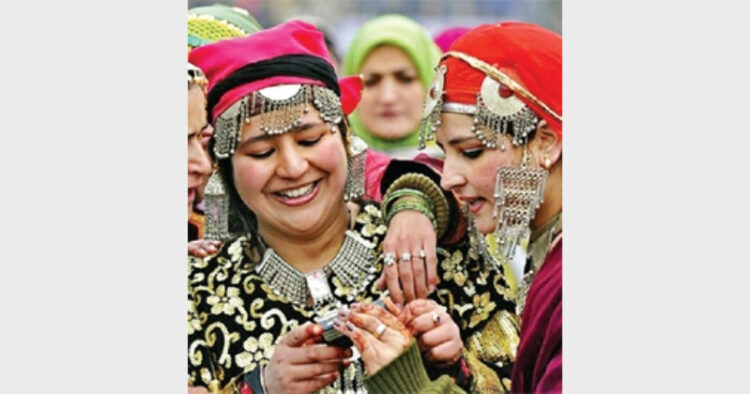Intro: The ethno-cultural consciousness, and Hindu-Buddhist inter-religious symbiotic spiritual consciousness, shaped the evolution of the “Kashmiriyat”.
Before the arrival of Buddhism 3rd century B.C., and that of Islam in the 12th century, the Kashmiri society was made of various races, ethnic groups and native religions and established the culture of tolerance and pluralism. One of the oldest mentions of the word ‘Kashmir/Kashmira’ is in the invaluable Ashtadhyayi of legendary Panini. Panini was a Sanskrit grammarian from ancient India, and Ashtadhyayi, the foundational text of the grammatical branch of the Vedanga, the auxiliary scholarly disciplines of Vedic religion (Hinduism). Kashmir is also known for some of the oldest literary creations of India. Nilmat Purana and Rajtaringini are two of them. Nilmata Puran contains account of ancient History of Kashmir, and 8000 Shalokas of Rajtarangini chronicle the ruling dynasties of Kashmir from mythical times to 12th century. Rajtarangini is considered to be the first written history in India. It starts from the reign of Gonanda-II, who was ruling Kashmir at the time of Mahabharata war.
According to the oldest extant book on Kashmir, the Nilmat Purana, the present day Kashmir was occupied by a huge lake called Satisar(Modern geological observations have supported this view). This lake was drained by the Rishi Kashyapa by cutting the gap in the hills of Varah-mula (presently known as Baramulla). The whole region which was drained by Rishi Kashyapa got named as Kash-mira-The word Kashmir is an ancient Sanskrit word which literally means land of Kashyap Rishi, a Saraswat Brahmin and one of the Saptarishis, who played a key role in formalising the ancient historical Vedic Religion
Vedic Culture thrived in this Rishi made Valley for centuries. Saivism, Buddhism, Sikhism and Sufism lived and enriched Kashmir for long. Infact, “एकं सद्विप्राः बहुधा वदन्ति” of Hinduism remained the driving force of the Kashmiri Culture for long.
Kashmir was known for the goddess Sharada pilgrimage. Sharda Peeth of Kashmir gave the Valley worldwide fame as it was also a famous centre for learning. Greeks, Persian and Chinese scholars used to visit Sharada Peeth, and in turn took the name of Kashmir to far flung regions and made it a worldwide brand. The Valley was on the world map due to its temples, Stupas and Bodh Viharas. World known Srinagar (founded by Emperor Ashoka) was famous because of its peaceful lifestyle, prosperity and wealth. Even the identity of today’s Kashmir, the saffron farming and Pashmina industry, was started in the Buddhist era. Most of what is related to the name and fame of Kashmir, made it a worldwide brand, and is related to Kashmiriyat stems from Hinduism (as the history of Kashmir reveals). Hence, Kashmiriyat cannot become the other name of destruction, massacre, hate or loot.
In the year 1989, complete exodus of the followers of Hinduism had taken place and the Kashmir (Valley) became approximately free from the followers of the Hinduism. This exodus wasn’t merely the forced migration of people of some faith; it was also the migration of believers and performers of Kashmiriyat. Not many believers of Saivism, Sikhism, Buddhism and Sufism are left in the Valley now. Today’s Kashmiri majority believes in setting up of an absolute Nizam-e-Mustafa. With that, gone is the ancient culture of tolerance and pluralism; the true Kashmiriyat!
Efforts of forcing Wahhabism in the name of Kashmiriyat have made it highly vulnerable. Converting everything other than Wahhabism into minority and then tendering them virtually ineffective is the practice which is going on and this is not the Kashmiriyat the Valley was known for. Kashmiriyat lies with the traditions, culture and the humanitarian values of Kashmir. It believes in “एकं सद्विप्राः बहुधा वदन्ति” and it is missing in the Valley in absence of Hinduism today.
Arvind (The writer is a researcher at J&K Study Center, New Delhi)














Comments